Commonwealth in search of its future Can post-Soviet states find common ground?
On October 10, Azerbaijani President Ilham Aliyev participated in the meeting of the Council of Heads of State of the Commonwealth of Independent States (CIS) in Dushanbe. The summit featured a number of noteworthy developments. The Russian side used the occasion to finally take long-overdue steps in its relations with Azerbaijan, as well as to hold a dialogue with the Central Asian states in Dushanbe. The Kremlin is making renewed efforts to strengthen the CIS, but filling it with new projects and initiatives in the current environment is very challenging. The Azerbaijani side proposed several solutions that could allow CIS countries to develop cooperation despite the dilemmas arising from the Russia–Ukraine war. Activating CIS members beyond Russia and transforming the organisation into a more multipolar entity could make the Commonwealth an important international platform.
Is the Commonwealth useful?
The original objectives of the CIS were modest — it was intended to ensure a “civilised divorce” of the republics of the former Soviet Union. Yet, even after three decades, the CIS continues to function. Leaders of nine member states and observer countries attended the current summit in Dushanbe — in addition to the President of Azerbaijan, the meeting was attended by the leaders of Russia, Armenia, Belarus, Kazakhstan, Kyrgyzstan, Tajikistan, Turkmenistan, and Uzbekistan.
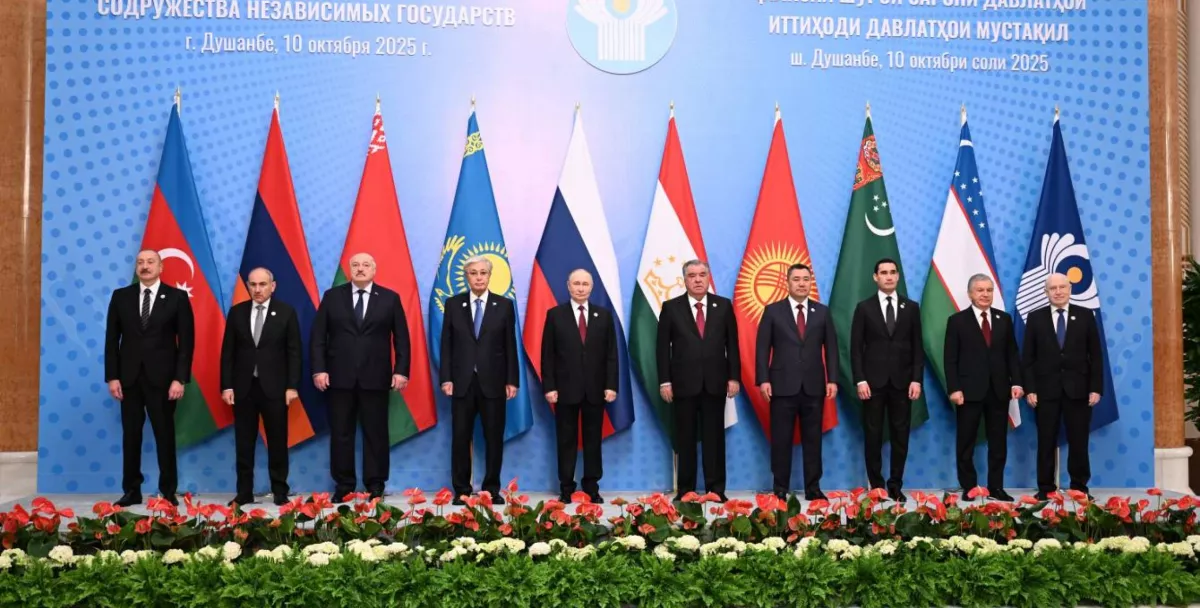
The CIS has many ambiguous aspects. At first glance, mutual trade between CIS countries seems to be growing. Last year, Russian Deputy Prime Minister Alexey Overchuk stated that over the past eight years, trade had more than doubled — from $56.7 billion to $118.7 billion. However, more modest figures were cited this year, noting an 18% increase over four years, including an 8% rise last year. In any case, even $118 billion is not a particularly large sum for a bloc that includes several dynamic economies.
At the CIS Council of Prime Ministers meeting in June, problems in industrial cooperation were candidly acknowledged. Industrial cooperation has regularly been declared a priority in CIS economic policy in recent years, but, as Tajikistan’s Minister of Industry Sherali Kabir noted, it largely remains “on paper,” since numerous adopted documents have not produced the “expected tangible results.”
What does this mean in practice? For example, although CIS countries, during their time as Soviet republics, had the technologies for full-cycle aircraft production and their combined share of the global fleet ranged from 15% to 40% depending on the aircraft class, Russia now struggles even to replace the Antonov An-2 biplane. This is because it has become clear that its industry requires interaction with neighbouring states.
A telling story involves the Il-76 cargo aircraft (which enabled the USSR to conduct unprecedented military and humanitarian interventions worldwide in the absence of a capable navy). In 2010, the plant in Tashkent was closed (of course, the Uzbek authorities were blamed for everything), and production of the aircraft was transferred to Ulyanovsk. And production collapsed: while the Tashkent plant had produced nearly a thousand Il-76s of various modifications, the Ulyanovsk facility still cannot reach its planned capacity of 12 aircraft per year. As a “major achievement,” the manufacturers announced the start of stable production in 2023 — in wartime conditions and with maximum support — of just six aircraft per year. Previously, production was limited to a few individual planes despite demand. This story, far from unique, should be recalled when hearing claims about the “unnecessariness” of certain partners or criticisms of Central Asian migrant workers.
It should not be forgotten that the CIS is a very complex structure. It is not limited to industry and the economy, but covers a number of other important areas. Moreover, cooperation within the CIS involves several key countries besides Russia. Therefore, it is unsurprising that even Ukraine did not immediately terminate all agreements within the CIS, but is gradually withdrawing from the numerous Commonwealth agreements, as they provide a useful legal framework.
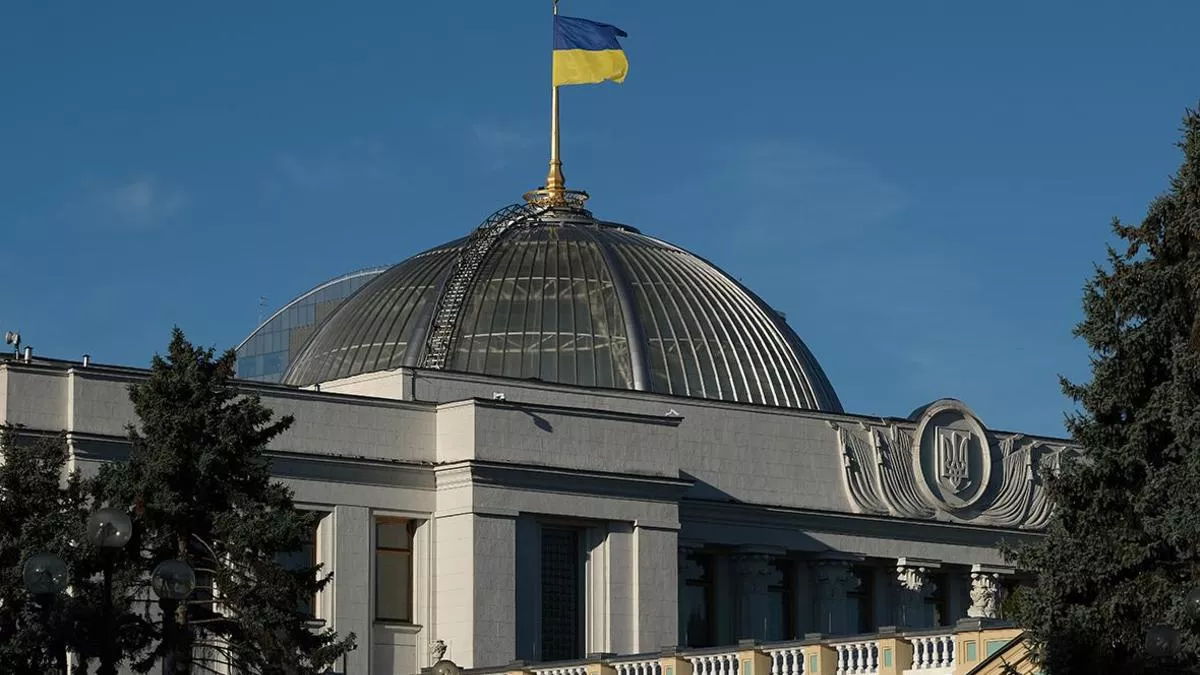
For example, in August, Kyiv withdrew from the CIS agreement on the evacuation of citizens from third countries; in June, it pulled out of the CIS agreement on the transfer of pensions and other payments; and in May, it ceased cooperation on customs matters. There is little doubt that, without the war, the Ukrainian side would not have severed these ties. Only the war ensured Kyiv’s final disengagement from cooperation with Russia and other post-Soviet states.
As a result of this and other developments, the contours and substance of the CIS have changed. De facto, its problematic Eastern European dimension has disappeared, and conflicts in the South Caucasus are moving toward resolution. Additionally, military matters have shifted to the sphere of the Collective Security Treaty Organization (CSTO), while economic issues have moved to the Eurasian Economic Union (EAEU). This process has been termed “multi-speed integration,” though at times it has simply amounted to a dilution of the CIS.
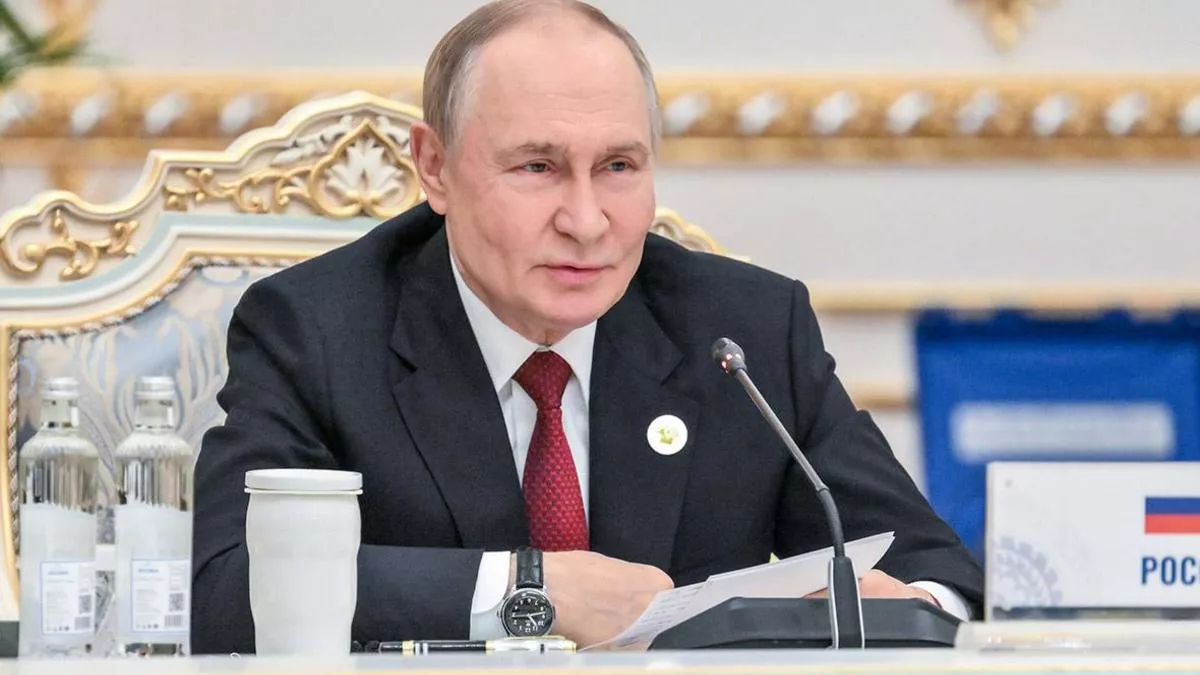
Notably, at the current CIS summit in Dushanbe, Russian President Putin immediately, after mentioning that trade within the CIS is growing and settlements are being conducted in national currencies, spoke about the importance of… the EAEU! This reflects a consistent line from Russia’s top officials: at the summer meeting of the Council of Heads of Government, also in Dushanbe, Russian Prime Minister Mikhail Mishustin called on attendees to further expand cooperation with the EAEU and even proposed joining the EAEU’s unified customs transit system.
It appears that the Kremlin is currently reorganising its integration priorities. They are not ready to abandon the CIS entirely, as the Commonwealth is broader than other integration initiatives associated with Russia. The CIS includes key countries such as Azerbaijan and Uzbekistan, and, as an observer, Turkmenistan (where the next summit will be held) — countries that do not participate in the EAEU or the CSTO.
Moreover, the Commonwealth provides a framework for cooperation at a time when engagement with Moscow, in the context of the Russia–Ukraine war, has become a contentious issue for some countries or has raised concerns about Western reactions to such moves.
However, the change in the composition and configuration of the Commonwealth means it will need to find new objectives. This is not a reason to write it off. Many international organisations have had to redefine their missions as the global situation evolved. Even NATO, tightly bound by the outcomes of the “Cold War,” was on the verge of collapse throughout the 1990s due to a glaring lack of purpose. And even when the United States found a role for NATO in regime change operations and counterinsurgency first in Afghanistan and later elsewhere, the alliance still faced the threat of gradual atrophy. It was only the outbreak of full-scale confrontation with Russia after 2014 that saved the military giant — the same confrontation that dealt a blow to the CIS.
How can the Commonwealth survive the Russia–Ukraine war?
One of the longstanding problems of the CIS has been its extreme unipolarity, its dependence on a Russian centre. Moreover, Moscow has approached the project’s development with ambivalence. The Russian side constantly seeks to attach its integration projects — whether the CIS, CSTO, or EAEU — to similar, larger projects in the region. Initially, these were Western initiatives; today, they are primarily Chinese, most notably the Shanghai Cooperation Organisation (SCO). This approach is referred to as the “integration of integrations.”
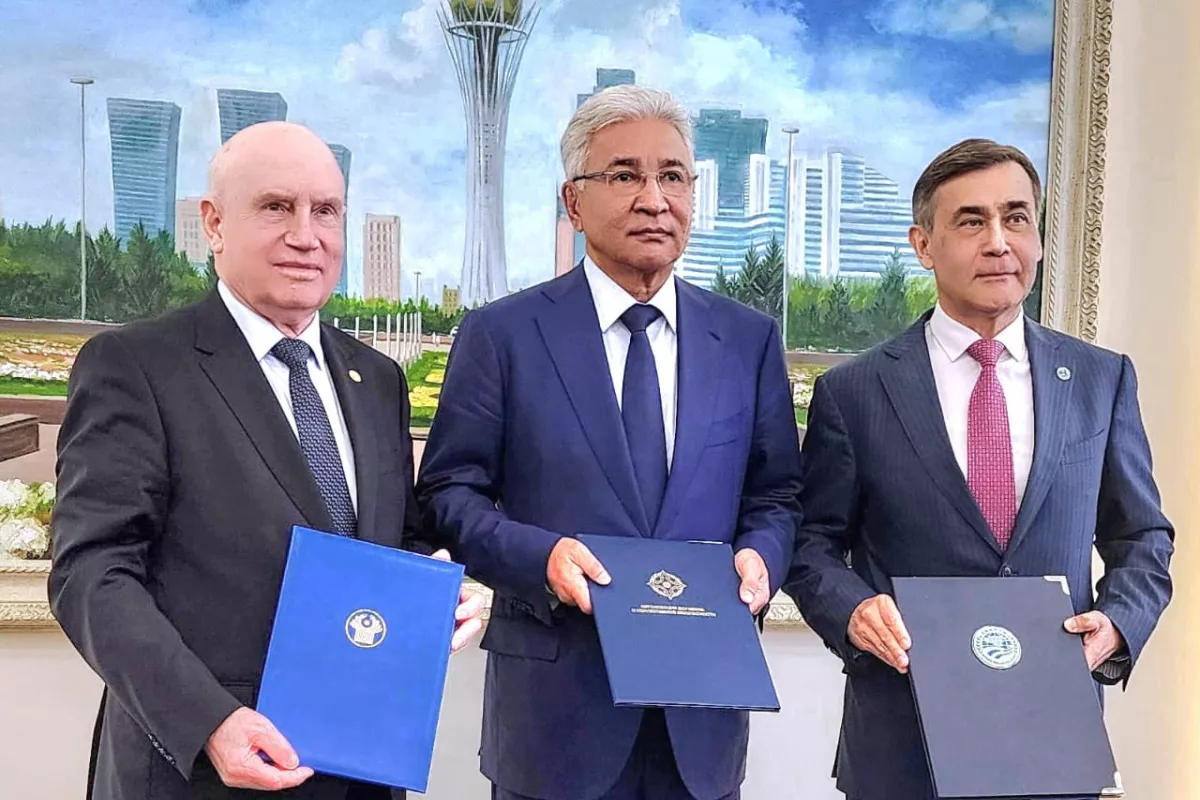
In early September, the CIS, together with the CSTO and the SCO, signed a roadmap for developing cooperation. Symbolically, this took place in Beijing, accompanied by a statement expressing the “intention to ensure the alignment of integration projects and the harmonisation of development centres in Eurasia.” The trend, so to speak, is clear.
The solution to the CIS’s problems lies in activating its other members. They should not be underestimated as potential alternative drivers of integration. Of course, Russia appears larger than the others on certain macro indicators, but size can be deceptive. Many states play a crucial role in global politics not because of their size, but because they possess unique resources or capabilities. Azerbaijan is a clear example: its current role as the only remaining overland route between Europe and Central, South, and East Asia gives Baku very strong leverage in global politics. Its strategic importance for overland connections between Russia and Iran, as well as the countries of the Persian Gulf, could also secure Azerbaijan a key role in CIS-related politics. Other CIS countries likewise have their own unique strengths, and therefore they too can contribute to the development of the Commonwealth.
The very prospect of pursuing independent political initiatives through the CIS would create an incentive for its members to engage more actively in the development of the Commonwealth. The CIS should not simply become another platform for dialogue with Moscow. Certain steps in this direction were already taken at the meeting in Tajikistan.
Russian President Vladimir Putin expressed readiness to support initiatives aimed at introducing new tools and mechanisms to deepen the capabilities of CIS countries, specifically mentioning import substitution with a focus on innovation, digitalisation, and the comprehensive, rational use of natural resources.
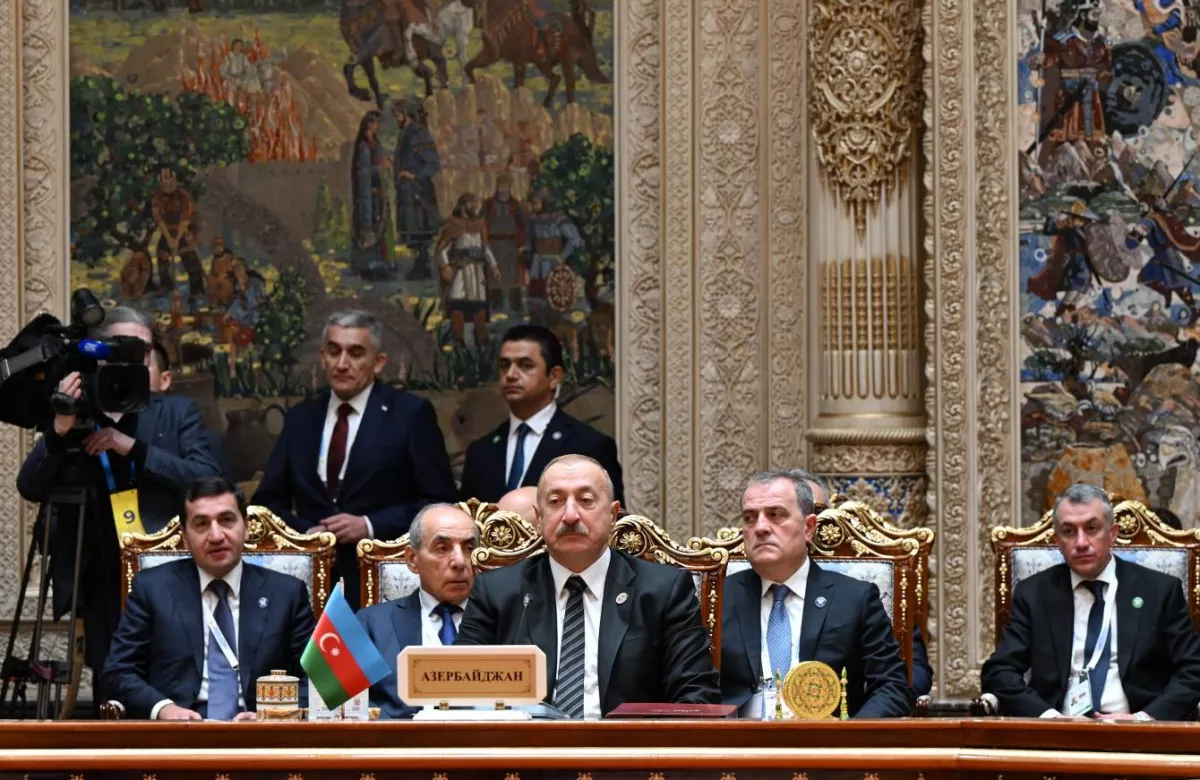
Putin also agreed with President Aliyev’s proposal to devote greater attention to cooperation in the humanitarian sphere. Although these statements were delivered briefly and concisely, they are significant. This area of cooperation could help adapt the organisation’s current activities to the new situation, in which several CIS countries are defining their own positions regarding the Russia–Ukraine war.
Of course, the Russian side clearly values the fact that a number of security-related documents were signed in Dushanbe, including cooperation programmes to strengthen border security at the CIS’s external frontiers for 2026–2030, counter-terrorism and counter-extremism programmes for 2026–2028, as well as a concept for military cooperation through 2030.
However, some CIS countries are reluctant to rush into military initiatives in the current international environment, shaped by the Russia–Ukraine war.
Russia’s increased activity at the Dushanbe CIS summit and related events appears to be a step in the right direction — a move that brings post-Soviet countries closer to building relations “without big brothers,” on the principles of equality and mutual respect. Yet, this step requires many follow-up actions to gain real weight. For now, it can only be observed that Russia took this step under conditions of growing pressure and stagnation in its confrontation with the West.
This comes alongside the failure of several other foreign policy initiatives — no matter the explanations Russian commentators offer, the fact remains that the recently planned Russian summit with Arab countries on October 15 collapsed spectacularly. Only 11 of 22 Arab leaders initially agreed to participate, and refusals began to pour in. All the more reason for Russia to value the willingness of CIS countries to cooperate and advance new initiatives within the organisation.








